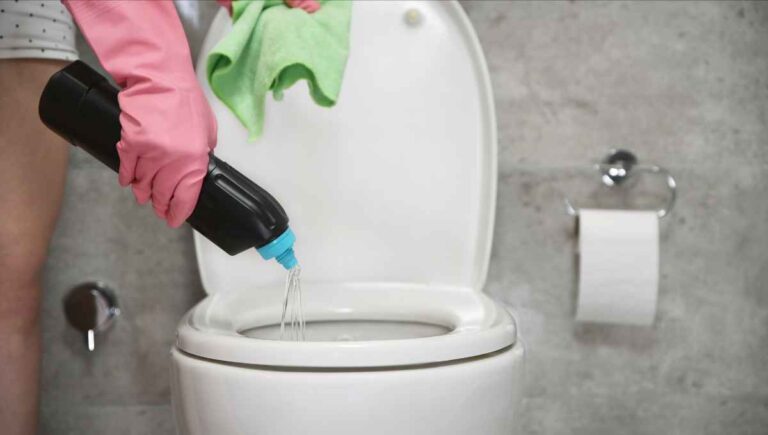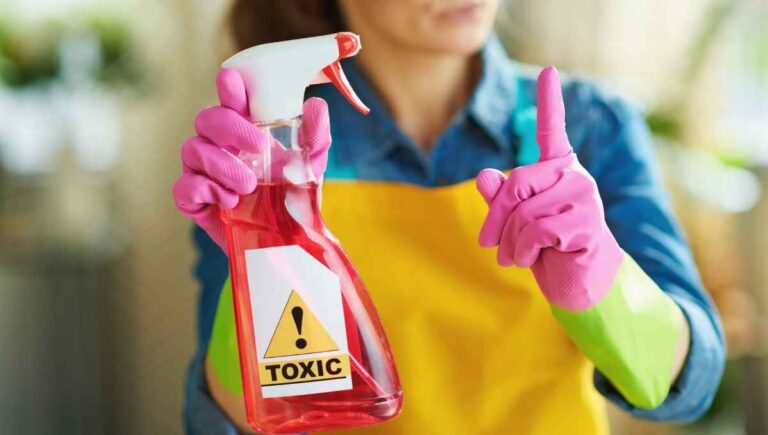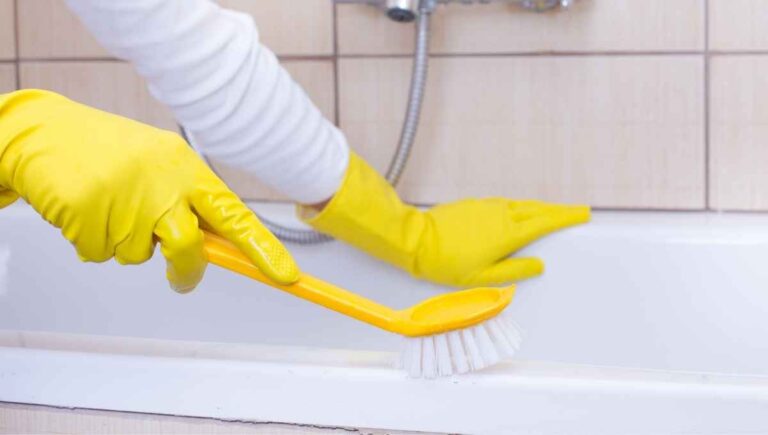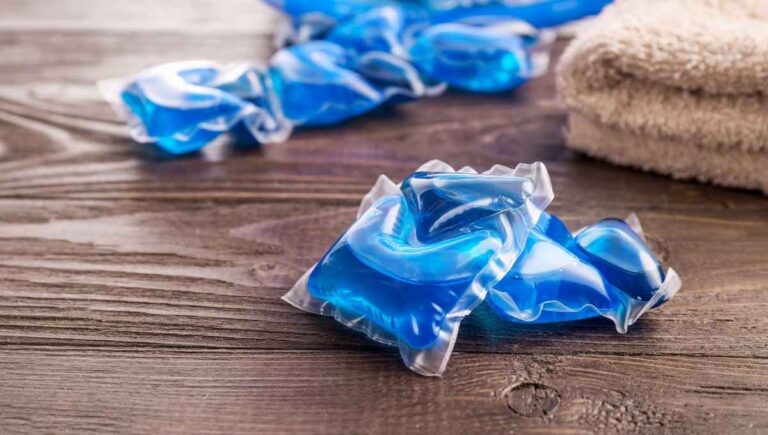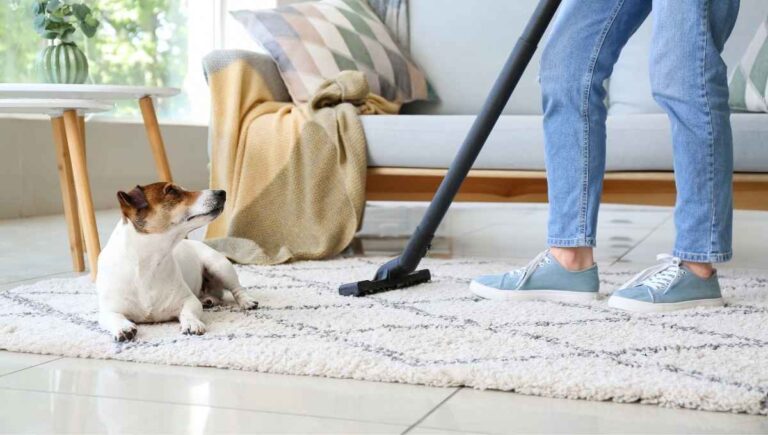Can You Vacuum a Wet Carpet? (Stop and Read This First!)
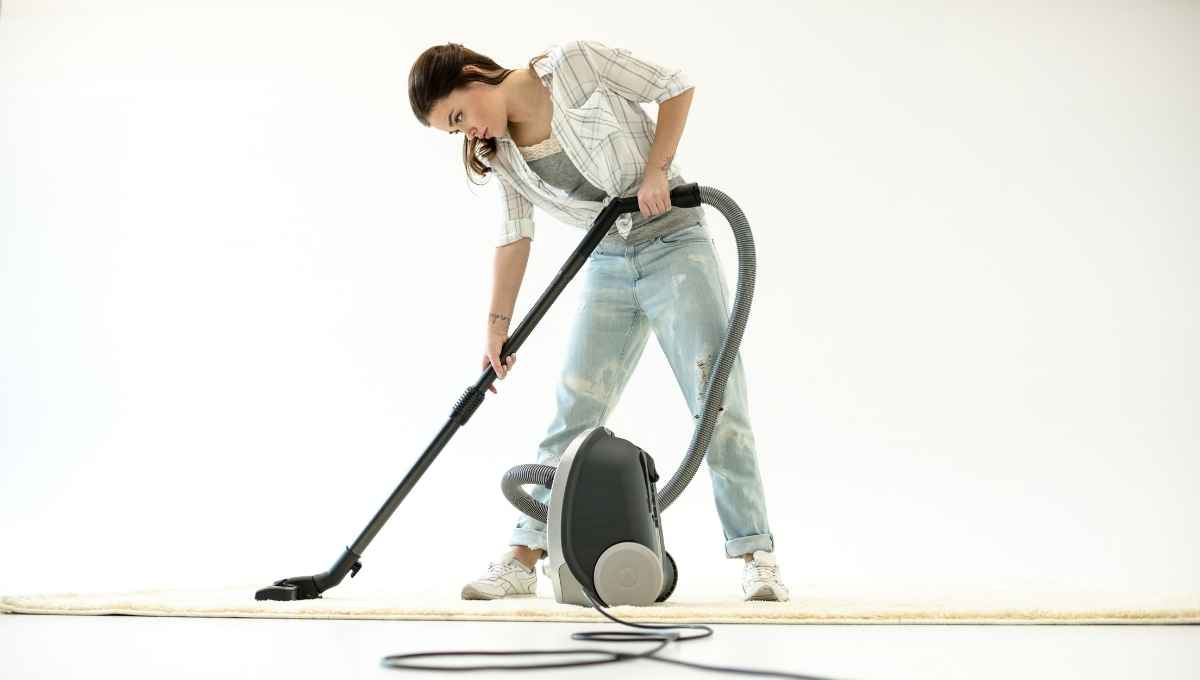
After a thorough carpet cleaning, it’s tempting to just finish the job right then and there by vacuuming your still-wet carpets. However, a vacuum is a piece of electronic equipment at the end of the day which may leave you with some questions. Can you vacuum a wet carpet? Is it safe and effective?
You should never vacuum a wet carpet unless you have special equipment designed for vacuuming wet surfaces. You can potentially damage your vacuum because of the water and it may be dangerous to you because of the risk of electrocution.
Electrocution is a serious affair, and standard vacuums can even short out and catch on fire if you try to use them on a wet carpet. Don’t lose hope, though!
There are still ways that you can dry your carpet, clean it while wet, and avoid the dangers of vacuuming a wet carpet.
This post contains affiliate links. This means Household Blogger may earn a commission should you make a purchase using any of our links. Please refer to our full affiliate disclosure policy for full details.
Here’s a Quick Pro Tip!
Vacuuming a wet carpet with a regular household vacuum is a dangerous idea. Not only will you likely break your vacuum, you will also risk hurting yourself!
Instead, use a wet/dry vacuum to get the job done properly.
Here are some of our favorites from Amazon:
1. Craftsman Heavy-Duty Shop-Vac – For cleaning up major messes!
2. Tineco Wet/Dry Vacuum – Perfect for all your household needs.
3. BISSELL Turbo Clean – A luxury vacuum that won’t disappoint.
Using Vacuums on Wet/Damp Carpets and Liquid Spills
Whether you’re using a standard vacuum or a specialty one, there are rules to play by when it comes to vacuuming wet carpets and water.
Breaking these ‘rules’ can be dangerous, so it’s important to know how to use your vacuum safely.
Can You Use a Vacuum On a Wet Carpet?
You can’t use a standard vacuum on a wet carpet, since most vacuums aren’t built to be able to take in water. Using a vacuum on a wet carpet will likely result in damage to the vacuum, but it may also cause damage to the carpet and to yourself.
It’s never worth the risk to try and use a vacuum on a wet carpet. The permanent damage to yourself, the carpet you’re trying to clean, and your vacuum are more than an inconvenience.
Plus, even if you took the risk, your vacuum probably wouldn’t be able to do any cleaning or drying in the first place!
Can You Vacuum Something That Is Wet?
You shouldn’t vacuum up puddles of water, urine, or other wet things unless you have a vacuum specifically suited for the job. Even small puddles can permanently damage your vacuum and may lead to mildew growth inside your vacuum.
Puddles of pet urine, milk spills, and other annoying liquid messes are never something you want to spend your time on.
Unfortunately, your vacuum is likely not the tool for the job.
It’s possible to clean up wet spills with a special wet/dry vacuum, but standard vacuums are easily damaged by the smallest of puddles.
Is It Bad to Vacuum a Wet Carpet?
Generally speaking, it’s bad to vacuum a wet carpet because of the harm it can cause to your vacuum. The exception to this is if you have a special vacuum made for wet carpets, in which case there will be no damage to you, the vacuum, or the carpet.
There are so many reasons why vacuuming a wet carpet could be a bad idea. At the forefront are concerns about damaging your vacuum and electrocution.
If you need to vacuum a wet carpet, the best thing to do is use a special wet/dry vacuum or simply wait until the carpet is dry!
Can You Vacuum a Damp Carpet?
You shouldn’t vacuum a damp carpet or a wet carpet. Vacuuming a wet carpet is more damaging, but a damp carpet can still cause damage to your vacuum. Vacuuming a damp carpet also tends to be inefficient, since dirt from your vacuum can get stuck on the floor.
Talk about counterproductive! Patience is key if you want to vacuum your carpet after it has been cleaned.
If you can wait long enough for your carpet to turn from wet to damp, then you can keep waiting until it’s fully dry; trust me, it’s way better to be safe than to rush a vacuum cleaning.
Can You Vacuum a Wet Carpet With a Dyson?
Dyson vacuums aren’t suited for use on a wet carpet. Using a Dyson vacuum on a carpet will usually result in damage to the motor since they aren’t built to be able to intake water. A non-Dyson wet/dry vacuum can pick up both dirt and liquid.
No vacuum, Dyson or otherwise, can be used on a wet carpet unless it’s a special wet/dry vacuum. This type of vacuum isn’t specific to a brand, but they’re all able to vacuum on wet floors.
Sorry, but this is one job that Dyson can’t handle!
You might also enjoy our post on If You Can Put a Carpet in The Dryer
Can I Use a Shark Vacuum On a Wet Carpet?
Some handheld Shark vacuums are wet/dry vacuums, which means you can safely use them to pick up dirt, grime, and liquid spills. Before you purchase a Shark vacuum or use a Shark vacuum on a wet carpet, make sure to check if it is a wet/dry vacuum.
Shark vacuums are well-known for being able to handle tough messes in any crevice of the house. Still, you need to be careful that the Shark vacuum you’re using is actually made for liquid spills.
Only a wet/dry vacuum is safe to use on a wet carpet.
Effects of Vacuuming a Wet Carpet or Liquid
Vacuuming wet stuff can result in a lot of trouble. Although it’s ideal to avoid vacuuming wet carpets and liquids altogether, it’s good to know what the outcome might be if you end up vacuuming a liquid.
What Happens When You Vacuum a Wet Carpet?
When using a standard vacuum on a wet carpet, dirty water will be sucked into the vacuum and can damage the vacuum’s motor and fan. It can also cause the vacuum to short, which can result in a fire or in electrocution.
There are many potential outcomes that can come from vacuuming a wet carpet, but none of them are good.
The best you can hope for is that your vacuum will only be mildly damaged instead of completely toasted.
What Happens If You Accidentally Vacuumed Water?
If your vacuum intakes a notable amount of water, shut it off immediately and unplug it. The safest choice is to take the vacuum to a repair shop to be cleaned and dried, but it’s possible to leave the vacuum for a couple of weeks to dry if it was a small quantity of liquid.
There are a lot of bad things that can happen if you accidentally vacuum a liquid. Thankfully, if you shut off your vacuum promptly and haven’t noticed any immediate damage, your vacuum is probably salvageable.
You’ll need to go to a vacuum repair shop, but it’s probably cheaper than buying a new vacuum!
Will My Vacuum Become Damaged If I Use It On a Wet Carpet?
Using a standard vacuum on a wet carpet often causes damage to the vacuum. This damage can be in the form of a broken motor, a broken fan, or the vacuum itself catching on fire.
Damage aside, it’s really not safe to use a standard vacuum on a wet carpet. If your vacuum catches on fire, then vacuum damage is going to be the last thing on your mind.
It’s best to avoid all of the risks by only using special wet/dry vacuums on wet carpets. These kinds of vacuums have no issues with sucking up water, so they’re safe to use on liquid messes.
Will My Vacuum Break If I Use It On a Wet Carpet?
In all likelihood, your vacuum will break if you use it on a wet carpet. Most vacuums aren’t made to be used on liquids, so any water can damage the vacuum’s fan and motor. In the worst case, it can cause the vacuum to short out or cause fire/electrocution.
Not only will your vacuum break, but you’ll also be putting yourself at risk by using it on a wet carpet. Electronics and liquid shouldn’t be mixed unless the equipment is made specifically to handle water.
In the case of vacuums, a wet/dry vacuum will be able to safely clean a wet carpet without breaking.
Is It a Fire Hazard To Use a Regular Vacuum On a Wet Carpet?
Using a regular vacuum on a wet carpet can potentially be a fire hazard. When water is sucked into the vacuum, it may cause the equipment to short which can then lead to a fire.
On top of that, vacuuming flammable liquids is a one-way ticket to a flaming vacuum cleaner.
If the goal is to clean up a mess (and not make another), then it’s important to always be careful what type of vacuum you’re using to clean up what type of mess.
Wet carpets should only be cleaned with vacuums that are specifically built to be able to suck in liquid. Flammable liquids are generally not safe to be vacuumed at all.
Using Shop Vacuums and Wet/Dry Vacuums on Wet Carpet
Now that we know a wet/dry vacuum is the tool for the job, let’s explore the different options you have for using them.
How Do You Dry a Wet Carpet Fast?
The fastest way to dry a wet carpet is to run a fan facing towards the carpet, use dehumidifiers, and lift the carpet slightly off of the floor. If your home has flooded, consider calling a specialist to help you dry out your home in the safest and most efficient way.
It can actually be dangerous to have a damp carpet for too long because it’s a breeding ground for dangerous molds.
It may be scary, but it’s best to let specialists do their thing rather than try shortcuts like putting a carpet in the dryer.
Using the tools listed above, it can take 2-3 days to fully dry out your carpet. You may want to deal with things on your own, but if it takes longer than that to dry you should call a specialist.
How Do You Vacuum a Wet Carpet?
The only safe way to vacuum a wet carpet is by using a wet/dry vacuum or a shop vac to remove the water. Most shop vacuums are relatively easy to operate, so you should always operate a vacuum specially made for liquid and not a regular vacuum cleaner.
Normal vacuum cleaners will be severely damaged if you try to use them on a wet carpet or other liquid mess. Shop vacs and wet/dry vacuums, on the other hand, can easily deal with water.
The process of vacuuming is similar to that of a regular vacuum.
Shop vacs usually have a compartment for the water to go into, so you should be sure to clear that out after each use so it doesn’t overflow.
What Is a Shop Vacuum?
A shop vac or shop vacuum is a kind of wet/dry vacuum. This type of vacuum can be used to clean up liquid spills, vacuum wet floors, and suck up the debris that usually wouldn’t be safe for a normal vacuum (such as nails and chunks of wood).
As the name implies, it’s usually used in commercial applications such as studio shops.
Messes in your home can be just as difficult to deal with, though, which means shop vacs are a great cleaning tool to have around.
They’re particularly useful for cleaning up liquid messes that regular vacuum cleaners can’t touch. This is especially true when compared to the alternative: good old towels.
You might also enjoy our post on If You Can Vacuum Ashes From a Fireplace
What Is The Best Shop Vacuum?
The best shop vacuum depends on what type of job you need to get done. Some shop vacs are made for the highest carrying capacity, suction power, or portability. Ultimately, there is no one shop vac that is the best in every situation.
The Craftsman CMXEVBE17595 is a shop vac that’s widely considered the best all-around option. Still, you might find it’s not quite right for your needs depending on what you plan on using it for.
Your budget is also an important constraint because a cheaper shop vac with fewer features and power might still be perfect for the application you need.
How Do You Use a Shop Vacuum On a Wet Carpet?
If you’re using a shop vacuum on a wet carpet, you need to first remove the filter. The filter is only there for blocking dust and solid debris, and it can cause issues if your filter gets wet for long periods of time.
Next, empty the inside container and place the nozzle over the carpet. Keep moving the nozzle as each area of carpet dries up.
One thing you need to watch out for is the container filling up. In the case of flooding, your wet carpet is probably really wet.
Filling up the container is fine, but if you don’t empty it after it gets filled you can have issues because the water can reach the motor and damage your shop vacuum.
Once empty, you can get right back to it!
How Do You Fix a Water Damaged Vacuum?
If you suspect your vacuum is water damaged, you should never turn it on until you know it has dried out. The best thing to do would be to take it to a professional repair service to get the water removed and any broken pieces replaced.
In a perfect world, you would never have to try to fix a water-damaged vacuum yourself.
It can be extremely dangerous to try and use a vacuum that has water in it, so testing it and hoping for the best is out of the question.
If you absolutely have to do it yourself, you need to wait for a long period of time to be sure that it has dried completely. Replacing the vacuum isn’t a bad idea, either!
What Is a Wet/Dry Vacuum?
A wet/dry vacuum is a specialty vacuum that can be used on liquid spills in addition to dry messes. It’s completely safe to use a wet/dry vacuum on water and dry debris, which makes it a valuable and versatile tool for cleaning.
Even for a wet/dry vacuum, excessive amounts of water will be difficult to vacuum up (think around 1 inch of water). Wet/dry vacuums made to be used at home have a lower capacity than commercial wet/dry vacuums.
Commercial wet/dry vacuums are known as shop vacs, and they’re even better at cleaning up big liquid spills than their smaller cousins.
How Do I Use a Wet/Dry Vacuum?
To use a wet/dry vacuum, begin by making sure the container inside is empty. Next, place the nozzle into the water and turn on the vacuum. Don’t move the nozzle until the area is dry. Repeat until the mess is cleaned or until the container is full, in which case you need to clear it out before continuing.
Some wet/dry vacuums have separate settings and parts for vacuuming liquid messes and vacuuming dry ones.
It’s always good to check to make sure you have the right pieces equipped if you have one of these kinds of wet/dry vacuums.
Another tip is to take the filter out when vacuuming liquid. Sometimes, moisture can get trapped in the filter and cause issues such as mildew.
Ways To Dry a Wet Carpet
Now that we know a wet/dry vacuum is the tool for the job, let’s explore the different options you have for using them.
How Do You Dry a Wet Carpet Without a Vacuum?
You can dry a wet carpet without using a vacuum by pointing fans toward the carpet, using a piece of equipment called a dehumidifier, and lifting your carpet off of the floor. You can also use towels to clean up wet carpets when there is less moisture to remove.
Most people don’t have a special vacuum just for drying out wet carpets, so don’t worry about that.
Even if you don’t have any of the other equipment listed, you can call a specialist to help you dry out your carpet.
These specialists will usually have dehumidifiers and fans, even if they don’t have a shop vac. They can also help you if anything else goes wrong, which makes them a safe option.
How Do I Dry a Wet Carpet Quickly?
The quickest way to dry a wet carpet is likely going to be with the help of a professional. You need equipment (such as heavy-duty fans, dehumidifiers, and shop vacs) to dry your carpet fast, and specialists are the most likely to have these tools.
On the off chance that you actually have some of these tools, then you can probably get away with drying your carpet yourself.
But since the situation can potentially be dangerous, it might be a good idea to get it checked by a professional anyway.
Professionals are the most likely to be able to tell you how fast it can dry, how to use the equipment in the most efficient way possible, and if your carpet is actually salvageable, to begin with.
Can Wet Carpet Be Saved?
In most cases, wet carpet can be saved by drying it out as quickly as possible. The cases where wet carpet can’t be saved include if it was soaked with contaminated water (i.e. water with bacteria in it from flooding) and if it has been wet for a long period of time.
Carpet that has been wet for a long period of time (over a few days) might run the risk of becoming the home to all sorts of dangerous molds.
You may not be able to see the mold, but you’ll likely be able to smell it and it can cause serious health issues.
In order to prevent this from happening, make sure to dry out your carpet promptly and replace it if any smells don’t go away. Getting it checked by a specialist isn’t a bad idea, either.
Can You Dry Carpet Without Pulling It Up?
You can dry carpet without pulling it up, but it will slow progress. Lifting up your carpet will allow more air to reach it, effectively speeding the drying process. If you can’t lift it, you can still dry the carpet using other tools.
Pulling up your carpet is definitely inconvenient, but a wet carpet can turn into a dangerous situation if it’s left damp for too long.
Humid environments are great for mold, which isn’t so great for you!
With the advice of a specialist, it might be completely fine to leave your carpet where it is while it dries. It all depends on your situation, like the tools you have and how wet the carpet was.
Can I Use Baking Soda To Dry My Carpet?
Thanks to its absorbent properties, baking soda can be used to dry a carpet. When using baking soda, make sure to use large amounts of it for the best results. This method is more effective on smaller areas of wet carpet, but it can be used anywhere.
Baking soda is unlikely to be the cure for an entire carpet flooding. It can really save the day for smaller sections of wet carpet, though!
The most important thing is to use plenty of baking soda and leave it for long enough that it can dry.
The great thing about baking soda is that it also acts as a scent neutralizer, so you won’t have to worry about your home smelling like a damp carpet forever.
You might also enjoy our post on If You Can Carpet Over Laminate Flooring
Related Questions
How Long Does Wet Carpet Take to Dry?
Assuming you’re using the best practices to dry your carpet, you should expect it to take 1-2 days to dry fully. These practices include lifting the carpet off the ground, using dehumidifiers, and using fans. If you only use some of these tactics, you can expect a drying time of closer to 2-4 days.
In all likelihood, your wet carpet will dry out within these time frames. In the case that it takes longer, you might have a problem on your hands!
It’s a good idea to reach out to a professional or specialist to help you with severe instances like home flooding.
How Long Does It Take For Mold To Grow On Wet Carpet?
According to the EPA, mold only takes a little over 24-48 hours to grow on wet carpet. If you don’t dry out your carpet in that time frame, you run the risk of allowing mold to grow in your home.
The most common health detriments from mold are triggering allergies and asthma attacks.
For people with asthma, mold can be life-threatening because it may render them unable to breathe if they have a severe asthma attack triggered by mold.
Final Thoughts
Don’t feel overwhelmed by the dangers of vacuuming wet carpets or the sheer number of options you have. There are lots of safe ways to remove moisture from your carpet, vacuums or not.
With the help of a professional or just a good vacuum, you can have your carpet dried and clean in no time.
Now the only problem is keeping it that way!




